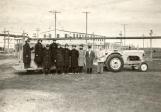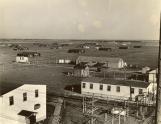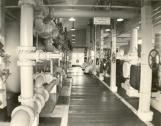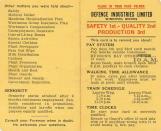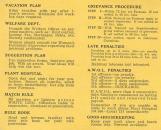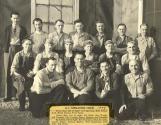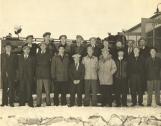3
Built between 1940-1941, the "Cordite Plant" consisted of a number of small, unconnected buildings surrounded by a high wire fence. Access was restricted and the site was heavily patrolled by guards.5
"It was a very secretive operation, that you couldn't anywhere near where it was located", recalled Jim Potter during an interview about the 'Cordite Plant'9
Once again, the railway proved vital as the "Cordite Train" transported people and explosive materials to and from the plant. C.N.R. and C.P.R. spur lines as well as 30 to 40 miles of narrow gauge track serviced the 1,000-acre site.11
Local support of the war deepened as residents took jobs at the "Cordite Plant." Though dangerous, the work was welcomed and the jobs boosted the economy of the town.13
This hammer was made with beryllium to prevent sparks and was used in the Cordite Plant1945
Transcona, Manitoba, Canada
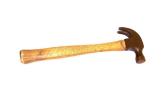
14
At the height of operations, the facility (officially known as "Defence Industries Limited") employed over 2,460 men and women in the manufacture of cordite. Under intense conditions and tight security, employees worked with explosive materials including cellulose nitrate, nitro-glycerine, and mineral jelly.15
This photo is of the Cordite Plant Fire Brigade shown with tractor pulling a wagon filled with hoseMay 1942
Transcona, Manitoba, Canada
